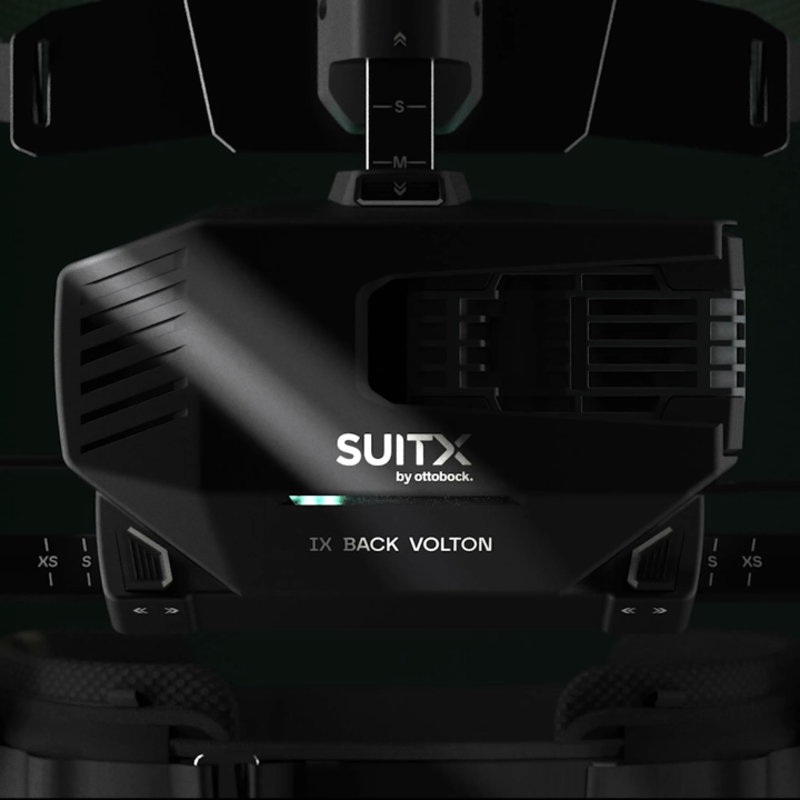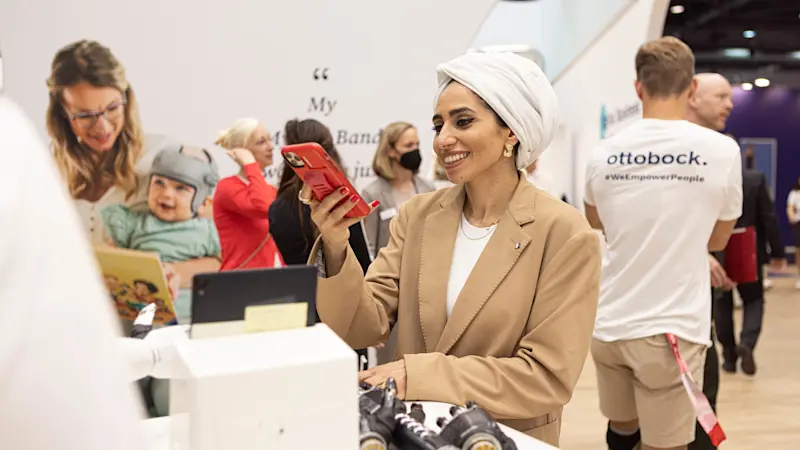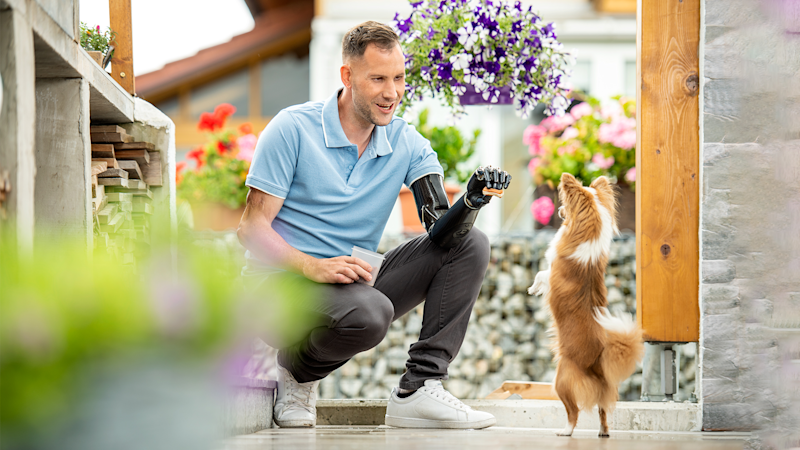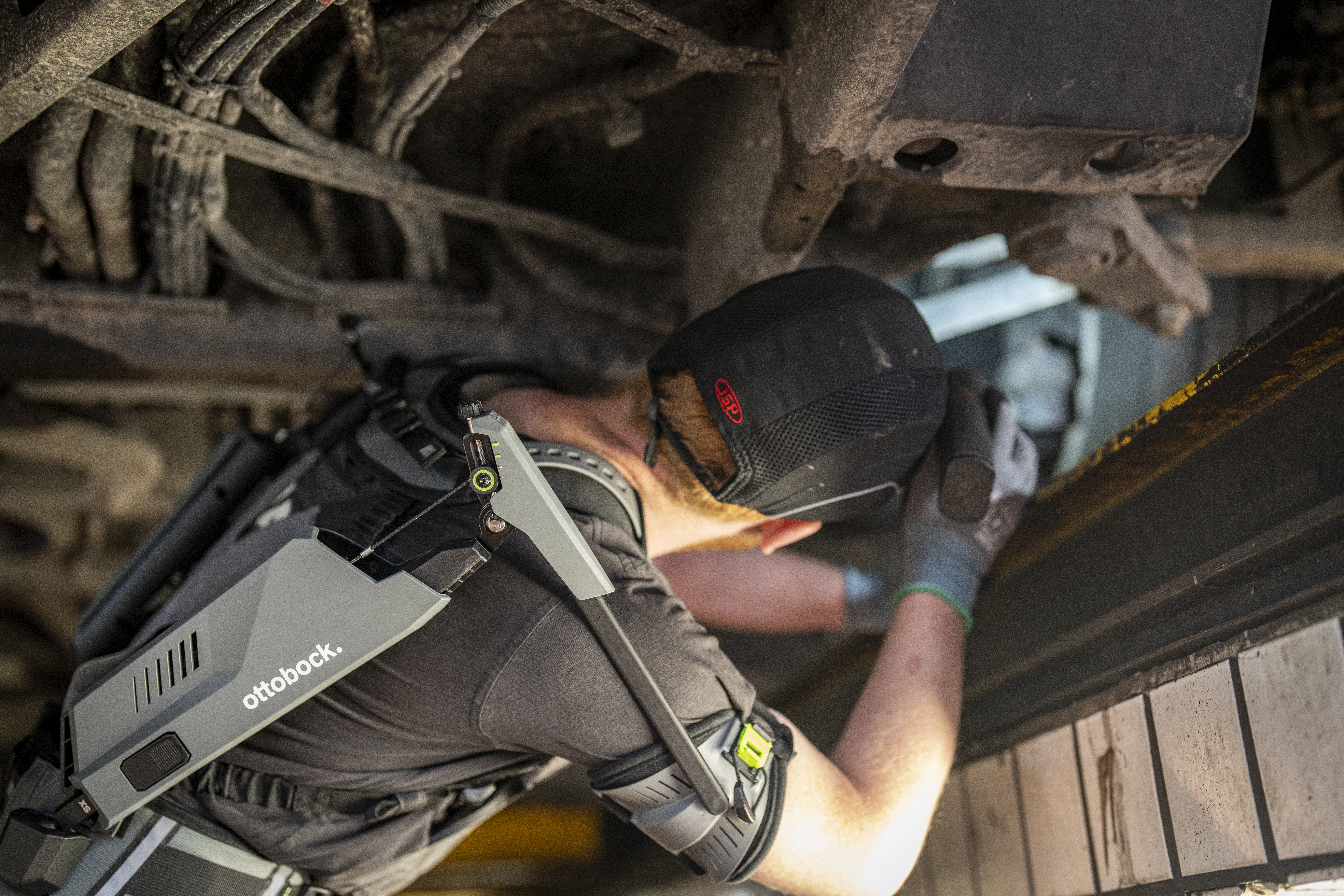
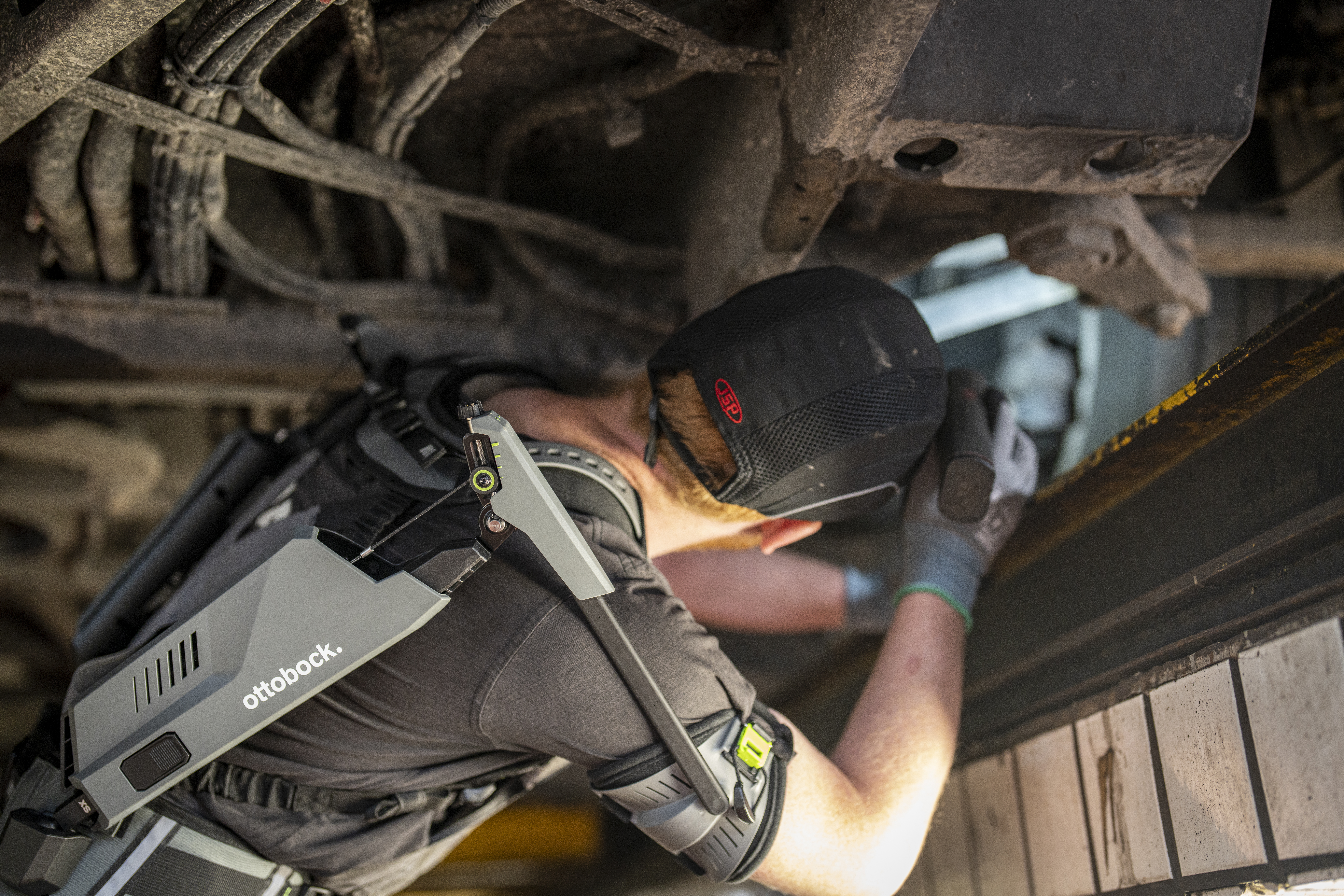
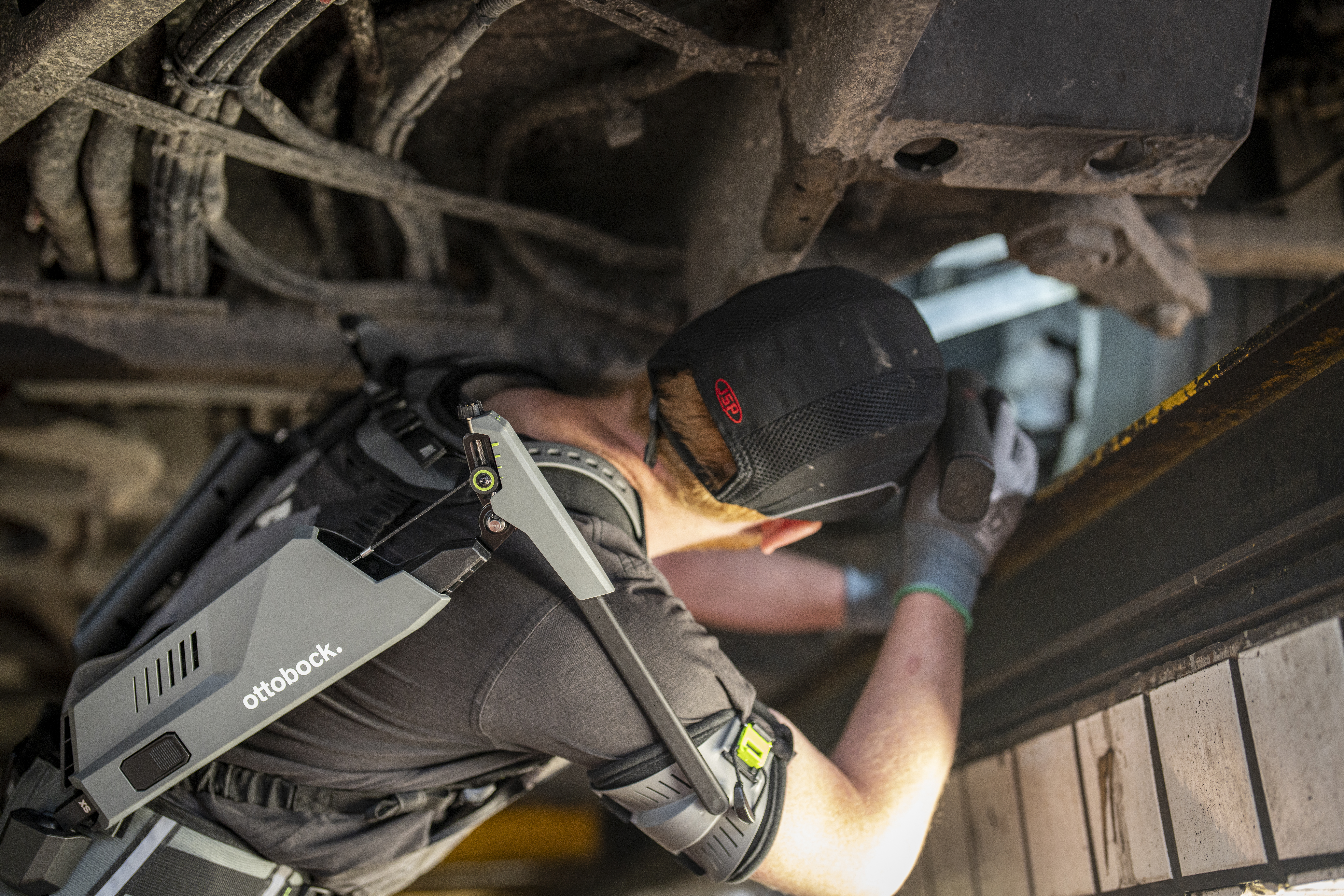
Exoskeletons for the workplace.
SUITX by Ottobock offers a number of exoskeleton solutions, promoting healthy working conditions and enabling people to continue working over the long term.
SUITX by Ottobock offers a number of exoskeleton solutions, promoting healthy working conditions and enabling people to continue working over the long term.
Exoskeletons make jobs more ergonomic.
Some of the greatest physical strains in the workplace include lifting and transporting heavy objects. This often leads to musculoskeletal disorders such as back problems, sick leave and high costs. In the logistics sector in Germany, illness-related incapacity to work causes approximately 25 days of absence per year for every employee and an annual loss in production of more than 17 billion euro.
Since 2012, SUITX has been developing body-worn support structures, so-called "wearables", to facilitate the everyday work of people performing physical labor. The team draws on Ottobock’s more than 100 years of expertise in biomechanics and orthopaedics when developing new solutions.
The exoskeleton’s functions support the body and help prevent musculoskeletal disorders and increase productivity. As a result, they contribute to reducing sick days and improving occupational safety.
Martin Böhm, CXO OttobockMore than 2,000 customers are already using the solutions from "SUITX by Ottobock", including leading automotive manufacturers such as Toyota North America and logistics service providers such as DB Schenker.

Just put on and go.
The exoskeletons from SUITX by Ottobock relieve strain on the lower back during lifting and support the arms and shoulders during overhead work. Thanks to the one-size-fits-all system and their lightweight design, the exoskeletons are comfortable to wear for almost any employee over extended periods.
SUITX by Ottobock has established itself as a market leader with passive, purely biomechanical back and shoulder exoskeletons. Since 2025, the portfolio has been expanded with the first lightweight, battery-powered back exoskeleton: the IX BACK VOLTON.
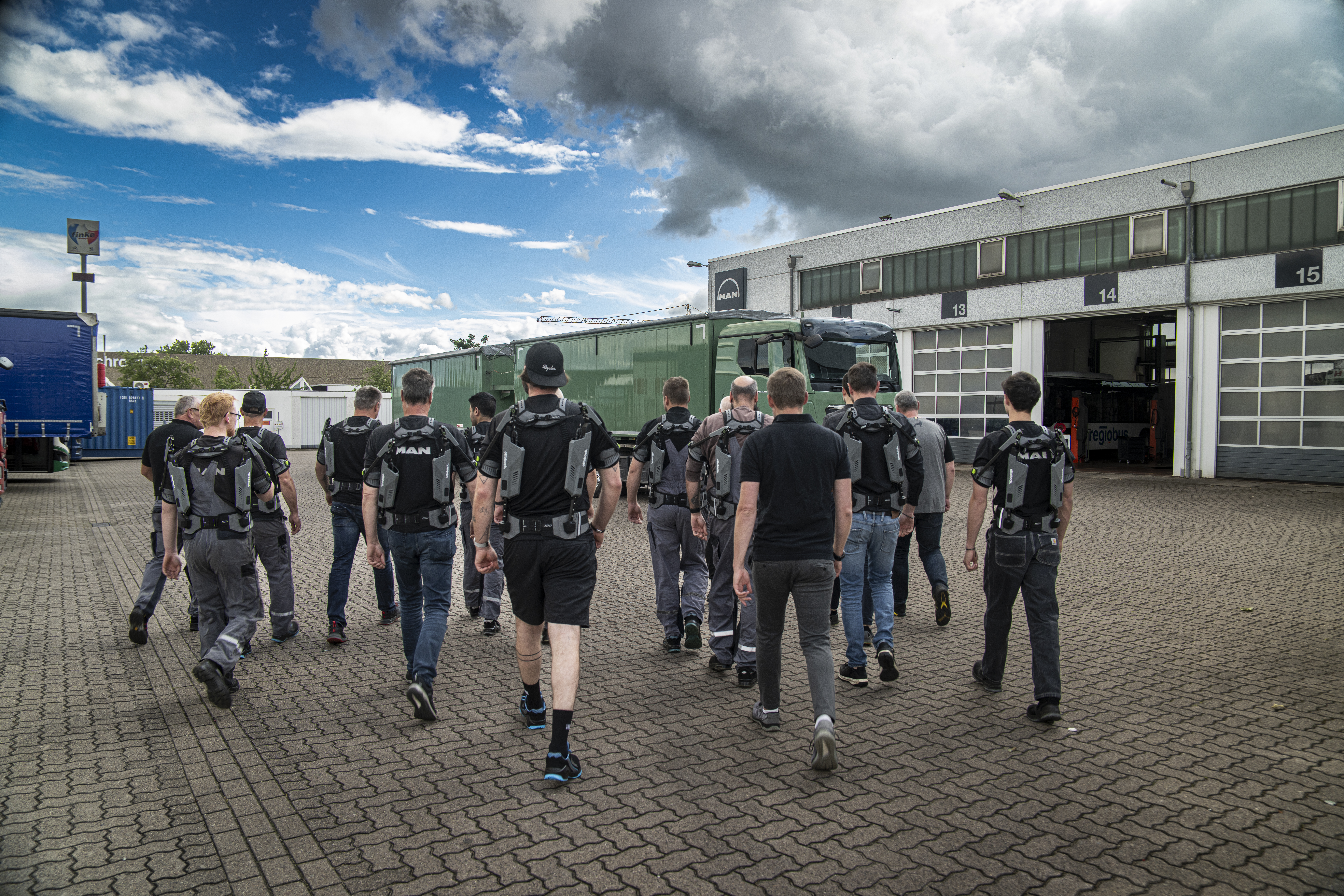
Intelligent performance in a sleek design.
The IX BACK VOLTON is the first motor-powered, intelligent exoskeleton in the SUITX by Ottobock portfolio. Equipped with a high-performance battery and precise motor technology, it offers adaptive support that adjusts to the user’s movements. With intuitive operation and a slim, lightweight design, it sets a new standard in industrial back support.
The key benefits:
Lightweight: only 4.8 kg (including battery)
Up to 10 hours of battery life
Back support for loads up to 17 kg
Slim profile for use in confined workspaces
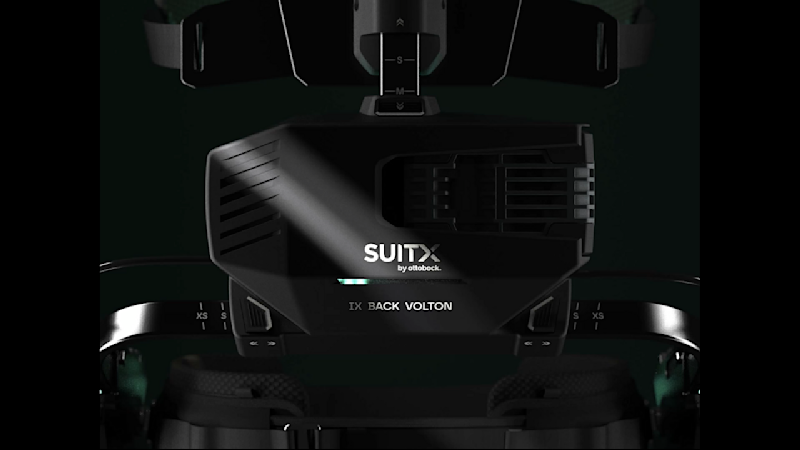
Full freedom of movement.
The IX BACK AIR exoskeleton was specially developed for people whose work involves not only moving heavy loads, but also operating forklifts and other vehicles or climbing stairs. It also enables the wearer to move around freely. When users are lifting heavy objects, it reduces the load on the lower back by up to 15 kilograms.
A built-in mode automatically detects when the wearer needs support and when they need freedom of movement. At around 3 kg, the IX BACK AIR is extremely lightweight and can be put on and taken off in under 20 seconds. It works according to a biomechanical principle by redirecting forces in the body, temporarily storing them and releasing them in a targeted manner. By using the body's own energy, the exoskeleton can be worn all day without any batteries.

The exoskeleton for comfortable overhead work.
Acting as a natural extension of the body, the IX SHOULDER AIR supports strenuous overhead work in logistics, production, servicing and trade. It is worn close to the body, in a similar way to a backpack, while enabling complete freedom of movement.
Das Design orientiert sich an den natürlichen Bewegungen des Menschen. The exoskeleton supports the wearer in lifting and holding their arms using two ergonomically shaped energy stores behind the back. Using a support structure that is precisely adapted to the human anatomy, the modules release the stored energy when the arms are raised, resulting in clearly perceptible relief.

The first digital ‘exoskeleton’.
AIRGO XP provides relevant health and safety data on workplace ergonomics while also offering personalized coaching for employees.
IT analyzes movements in real time and delivers immediately actionable insights to improve posture during specific tasks. The system does not require any external sensors—it operates using a single, standalone device worn close to the body. This makes it easy to integrate discreetly into daily work routines.
Through the custom-developed app, not only are movement analyses made visible, but the device also gives recommendations for improving ergonomics and suggests targeted training exercises.
The individual activity analysis is anonymous and can only be viewed by the user.
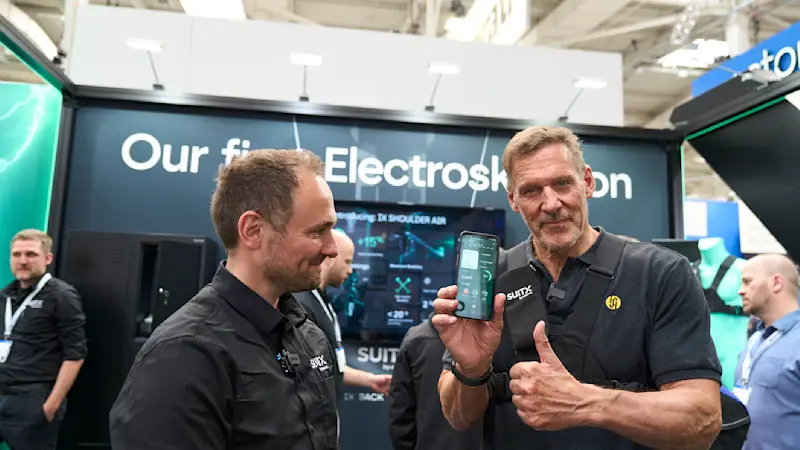
Challenges and Solutions.
Physicallydemanding and repetitive taskscause a high physicalburden on employeesacrossmanyindustrialsectors. The resultingmusculoskeletaldisordersaccountformorethan a quarterof sick days in Germany and evenmorethan a thirdofabsences in the United States. This has an impact on productivity.
Sectors such aslogistics, automotive and mechanicalengineering, but also others like healthcare (surgery and nursing), crafts, and servicesareaffected. When such situationscannotberesolvedthroughothermeasures, exoskeletonsprovidethe ideal solution.
Numerous renowned companies have shared their experiences with using SUITX exoskeletons.
Ulrika Biesèrt, Chief People & Culture Officer at IKEA Retail (Ingka Group)At IKEA, our co-worker are at the core of everything we do, and our ultimate goal is to ensure that work contributes to a healthy and fulfilling life at home.
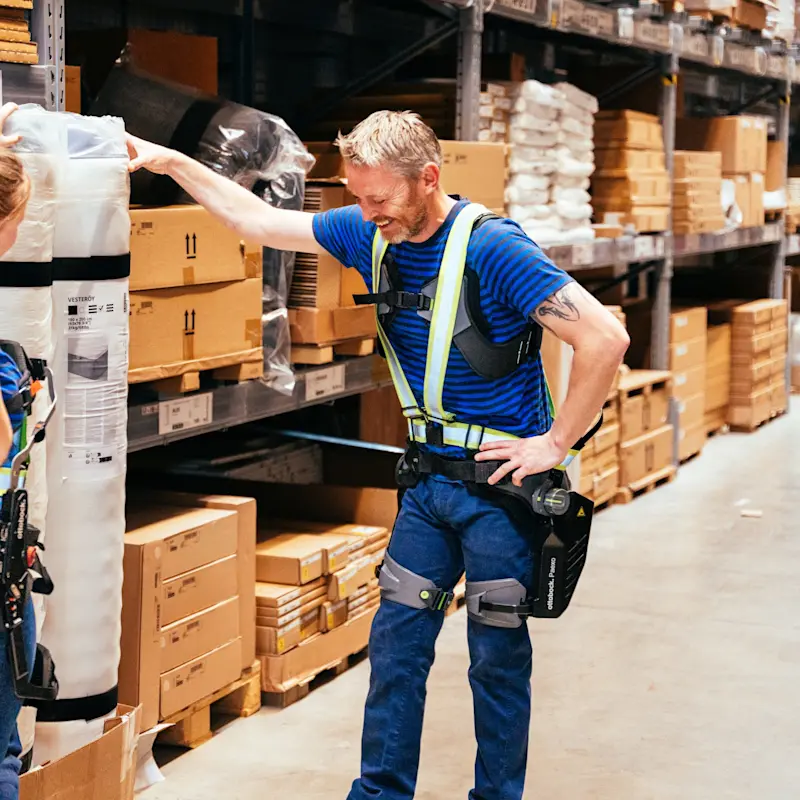
Contact person.
If you are interested in the use of our products, please contact SUITX directly

